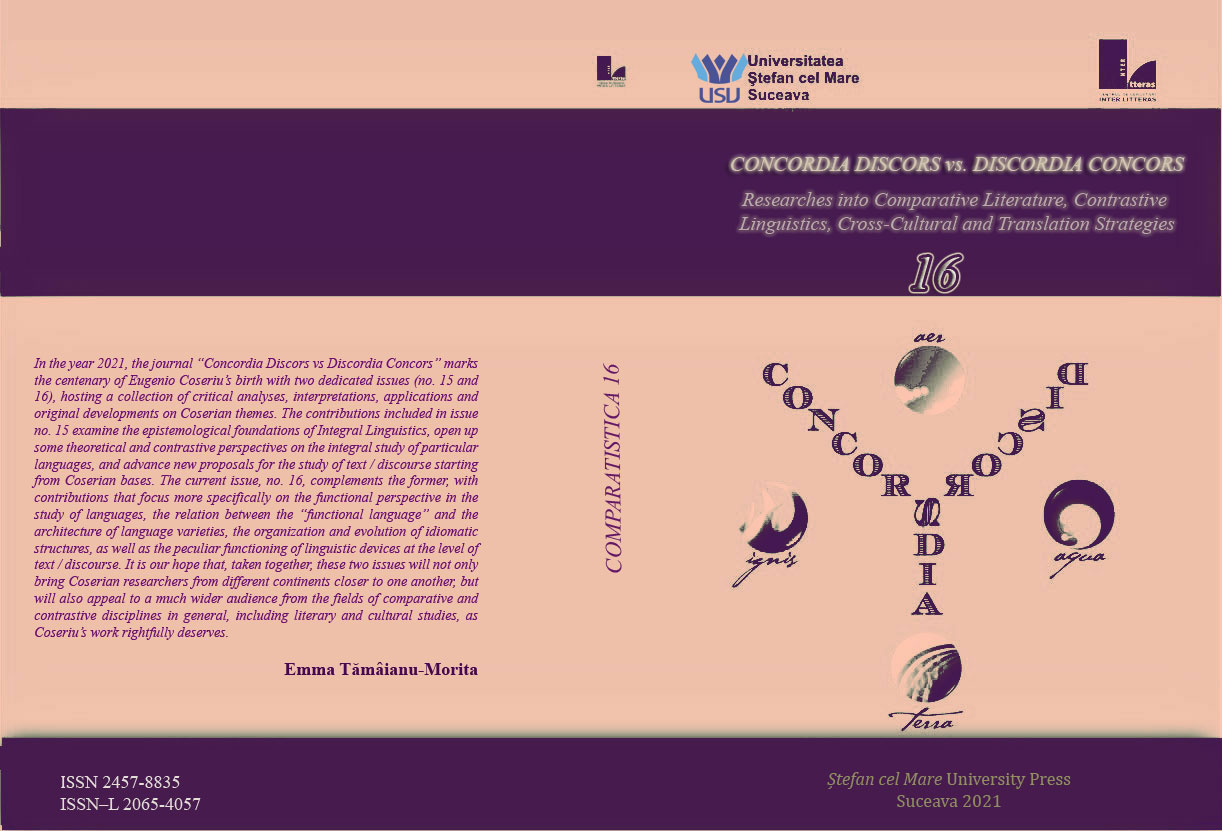Introductory Note
Introductory Note
Author(s): Emma Tămâianu-MoritaSubject(s): Language and Literature Studies, Theoretical Linguistics, Applied Linguistics, Historical Linguistics
Published by: UNIVERSITATEA »ȘTEFAN CEL MARE« SUCEAVA
Keywords: Eugenio Coseriu; synchrony; diachrony; history;
Summary/Abstract: In the autumn of 2014, a new Japanese translation of Eugenio Coseriu‘s early masterpiece Sincronía, diacronía e historia. El problema del cambio lingüístico (1958), was published in the prestigious collection Iwanami Library of Classics (Tokyo), under the title Gengo henka to iu mondai. Kyōjitai, tsūjitai, rekishi [The problem of linguistic change. Synchrony, diachrony, history]. The first Japanese translation, by Katsuhiho Tanaka (b. 1934) and Takashi Kamei (1912-1995), had appeared at Kronos Publishing House in 1981, playing a crucial role in the dissemination of Coseriu‘s theory in Japan, even though its circulation was relatively limited and bore all the marks of a niche publication. As Kronos subsequently closed down, Katsuhiko Tanaka felt that the text risked to be lost forever, buried in dusty storage facilities of university libraries or forgotten on the shelves of private book collections, and ageing prematurely due to a style that was already somewhat archaic in 1981, as it reflected the idiosyncrasies of the venerable Takashi Kamei. Tanaka therefore took it upon himself to make a new, modern version, in a reader-friendly format: with a fluent contemporary style, smallsized, conveniently priced and included in a most renowned collection – the Iwanami Library of Classics –, whose high cultural standing and financial stability would ensure the survival of the text ‗forever‘, that is for as long as the Japanese language still has readers somewhere in the world.
- Issue Year: 2021
- Issue No: 16
- Page Range: 11-15
- Page Count: 5
- Language: English

